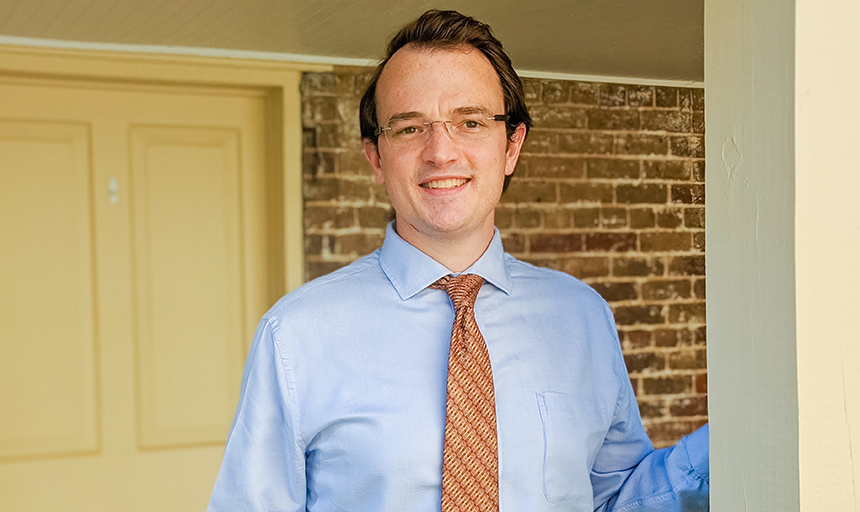Bucher pens opinion piece on importance of honoring enslaved laborers
April 05, 2021

The following is an excerpt from Dr. Jesse Bucher's piece that appeared as an op-ed in the Roanoke Times on Sunday, April 4. Bucher, an associate professor of history, is the director of the Center for Studying Structures of Race at Roanoke College.
On April 8, Roanoke College will unveil two plaques on the Administration Building — our oldest and most prominent building — honoring the enslaved persons who played an integral role in building our campus from the late-1840s through the early 1860s. This unveiling represents one small step in a much larger process dedicated to understanding, recognizing, and commemorating the centrality of slavery to the growth of our college in its founding years. Over the next five years, this sustained inquiry will culminate in the construction of a public monument that honors the historical contributions of enslaved persons in Southwest Virginia.
Taking account of our institutional connections to slavery requires us to consider both the physical and figurative presence of enslaved persons in our college’s history. In addition to recognizing the enslaved individuals who worked here or elsewhere to produce surplus institutional wealth, we need to further consider how slavery itself factored into the college’s academic mission and original identity as a liberal arts college.
The earliest buildings and grounds at the Roanoke College campus provide a direct physical connection to the work of enslaved people. The presence of slavery at Roanoke College, however, reached much farther than the physical campus. Prior to 1865, at least 50% of the Roanoke College Board of Trustees — who lived in all segments of the Roanoke Valley — owned slaves. So, too, did members of the college’s administration and faculty. The enslaved people owned by these individuals generated the kinds of surplus wealth that board members could later invest in the growing institution. Moreover, this generated wealth allowed the sons of these same local elites to have time and money to attend college, and was ultimately handed down across generations. Indeed, many members of the Board of Trustees who served the college after the Civil War were former slaveholders.